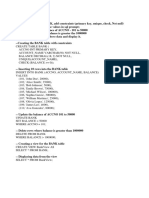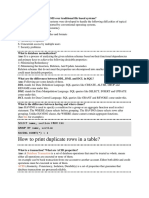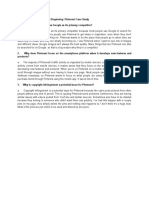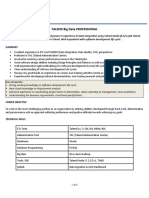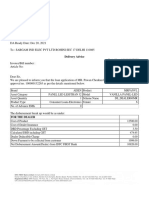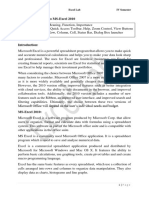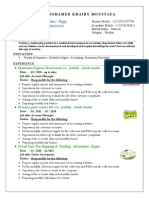0% found this document useful (0 votes)
3 views12 pagesDatabase Management
The document outlines the differences between DBMS and RDBMS, emphasizing that RDBMS supports multiple users, normalization, and better data security. It explains normalization with an example, defines primary and foreign keys, and describes the ACID properties in DBMS. Additionally, it provides SQL queries for creating and manipulating tables, including examples of insert, update, delete, and select operations.
Uploaded by
rushipatel16384Copyright
© © All Rights Reserved
We take content rights seriously. If you suspect this is your content, claim it here.
Available Formats
Download as PDF, TXT or read online on Scribd
0% found this document useful (0 votes)
3 views12 pagesDatabase Management
The document outlines the differences between DBMS and RDBMS, emphasizing that RDBMS supports multiple users, normalization, and better data security. It explains normalization with an example, defines primary and foreign keys, and describes the ACID properties in DBMS. Additionally, it provides SQL queries for creating and manipulating tables, including examples of insert, update, delete, and select operations.
Uploaded by
rushipatel16384Copyright
© © All Rights Reserved
We take content rights seriously. If you suspect this is your content, claim it here.
Available Formats
Download as PDF, TXT or read online on Scribd
/ 12
















